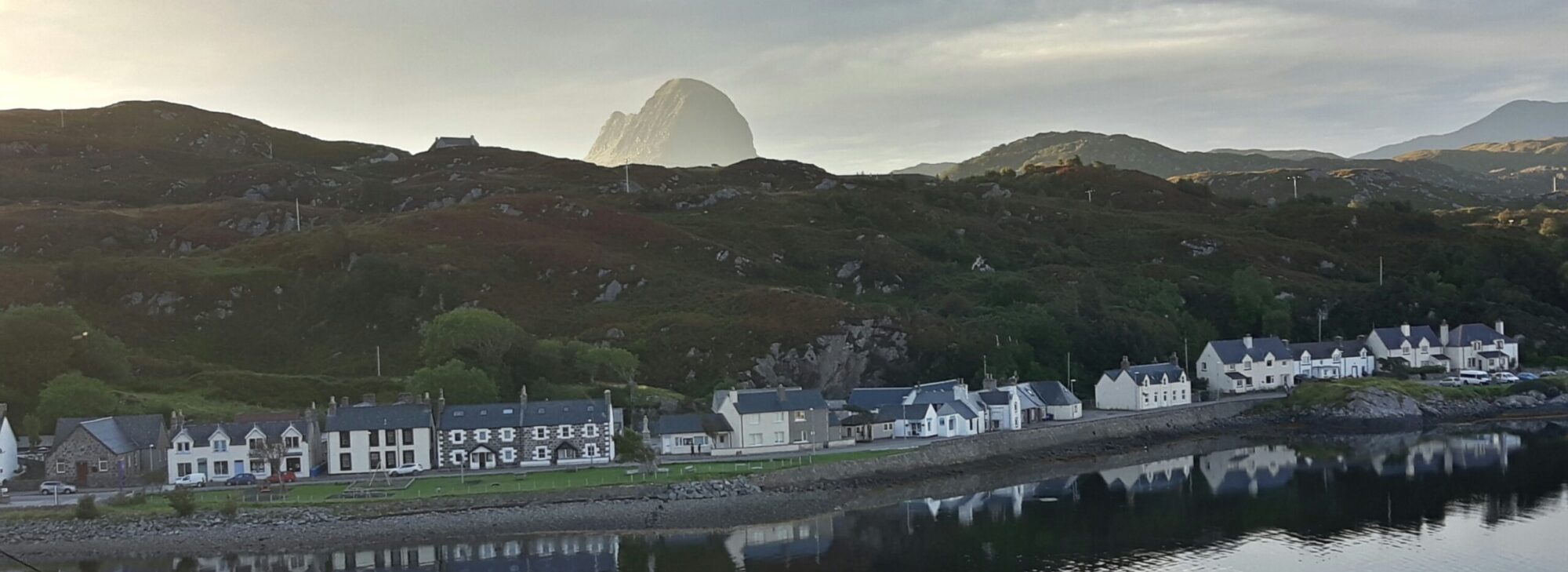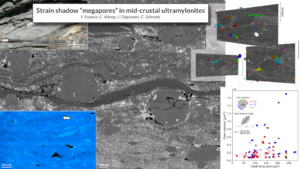While we know a lot about the deformation and metamorphism of shear zones in the Earth's crust, we don't really have a good idea of their hydraulics in the ductile domain and around the brittle-ductile transition. There are a whole range of mechanisms that produce porosity in mylonitic shear zones, and they differ based on the active deformation and metamorphic processes, the rock composition (and its evolution) and changes in the boundary conditions. We have only just started to understand the different forms of porosity in shear zones beyond hydraulic fracturing, and have a long way to go in order to grasp where and when pores form and decay. Sure is that wherever they do, they control fluid-rock interaction and thus a lot of processes that are of direct relevance for our societies.
Over the last decade or so, I have helped establishing that creep cavitation is much more common in ultramylonites than previously assumed. This became possible by combining non-invasive 3D x-ray imaging with high-resolution electron microscopy. We have learned that cavities can form void sheets (which potentially trigger ductile failure), that they can localise in shear bands and that they form in more than one way (including by crystal plasticity). We also found evidence that creep cavitation itself generates small hydraulic gradients that drive fluid flow in shear zones on the grain scale.
Currently, I am working with a group of collaborators on samples from the Cap de Creus (NE Spain) to understand a previously undescribed type of synkinematic pores, strain shadow megapores (see vEGU21 vpico slide here).
Relevant publications
- Gilgannon, J., Waldvogel, M., Poulet, T., Fusseis, F., Berger, A., Barnhoorn, A., & Herwegh, M. (2021). Experimental evidence that viscous shear zones generate periodic pore sheets. Solid Earth, 12(2), 405-420.
- Gilgannon, J., Fusseis, F., Menegon, L., Regenauer-Lieb, K., Buckmann, J. (2017). Hierarchical creep cavity formation in an ultramylonite and implications for phase mixing. Solid Earth 8, 1193-1209, https://doi.org/10.5194/se-8-1193-2017.
- Menegon, L., Fusseis, F., Stunitz, H. (2015) Creep cavitation bands control porosity and fluid flow in lower crustal shear zones. Geology, doi:10.1130/G36307.1.
- Schrank, C., Fusseis, F., Karrech, A., Regenauer-Lieb, K. (2012). Thermal-elastic stresses and the criticality of the continental crust. Geochem. Geophys. Geosyst., 13, Q09005, doi:10.1029/2012GC004085.
- Fusseis, F., Regenauer-Lieb, Liu, J., Hough, R., De Carlo, F. (2009). Creep cavitation and dissolution establish a granular fluid pump in ductile shear zones. Nature 450 (7249).
- Regenauer-Lieb, K., Yuen, D., Fusseis, F. (2009). Landslides, Ice Quakes, Earthquakes: A Thermodynamic Approach to Surface Instabilities. PAGEOPH 166, 1-24.
- Fusseis, F., Handy, M.R. (2008). Micromechanisms of shear zone propagation at the brittle-viscous transition. Journal of Structural Geology 30/10, 1242-1253.

